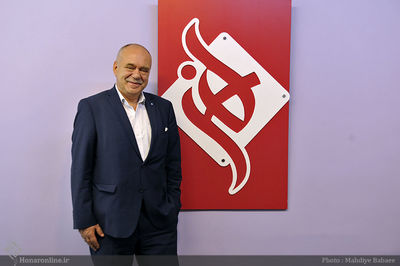In an exclusive interview with Honaronline, Hungarian sculptor Sandor Andras Kocsis, who is also the director of Kossuth, a leading publishing company in Hungary, said: When we speak about Omar Khayyam, we all know that undoubtedly he is the most popular Persian poet in the world. His fame spread across oceans and continents to immortalize his eternal quatrains on life and death, on pleasure and sorrow, on eternity and brevity.
He added: It is also a well-known fact that Khayyam is now the most popular Persian poet outside Iran, and he profoundly influenced the thought of Western literature. Khayyam's poetry started to inspire Western poets many centuries after his death. By now we know more than 40 English and approximately 24 German translations of Khayyam’s Rubaiyat (quatrains). The latter fact strongly underlines the unprecedented success and popularity of this great Persian poet since his Western rediscovery by Edward Fitzgerald in England in the mid-19th century.
According to Kocsis, Khayyam's poetry played an eminent role in lesser known European literature as well: One of the best examples is Hungary in Eastern Europe where the literary legacy of Omar Khayyam looks particularly far-reaching due to several factors. As far as Hungary is concerned, due to its ancient ties to different Oriental countries and its own Oriental origins with links to the Iranian lands and culture, there has been a constant interest in Persian culture and language. Please note the presence of at least sixty Iranian loanwords in modern Hungarian language. Fascinated by its rich heritage and thanks to Hungarian contacts with the Persian world, several Hungarian scholars started to study Persian poetry in the 18th century.
He further said: Nowadays, we are witnessing a renaissance or maybe an unbroken popularity of Khayyam's poetry in Hungary. For instance, a selection made of Khayyam poems translated by 14 eminent Hungarian poets which was published in 1999. The most recent volume dedicated to Khayyam was published this year by the prestigious Kossuth Publishing House in Budapest with magnificent illustrations of the well-known Tehran-based Hungarian Gizella Varga Sinai. This last book is the first trilingual work (Persian-Hungarian-English) and of great importance as it helps to show the cult of Khayyam in Hungary. This last volume well represents the ardent interest in Khayyam's philosophy and thoughts in present-day Central Europe.
In conclusion, the Hungarian sculptor noted that he has so far created 27 different sculptures and about five in Budapest, and now a new sculpture of Khayyam is going to be displayed in Budapest: I was asked to make Khayyam’s sculpture for display in Budapest. I concentrated in his eyes. He was not just a poet. He was a talented scientist. He was a guy who looked around his world to see what was happening. His sculpture is ready and soon will be erected in a square in Budapest or in the building of Hungarian Academy of Sciences.
A number of Persian literature aficionados and experts on Persian mathematician, astronomer and poet Omar Khayyam took part in the Khayyam millennium celebration last Thursday, which was organized by the Iranian Society of Cultural Works and Luminaries.
Khayyam is chiefly known to English-speaking readers through the translation by the English writer Edward Fitzgerald of a collection of his quatrains in the Rubaiyat of Omar Khayyam.

